In the run-up to the centenary year of Malabar Hindu Genocide of 1921, efforts to glorify and mainstream distorted history by Islamists and Leftists portend a sinister trend
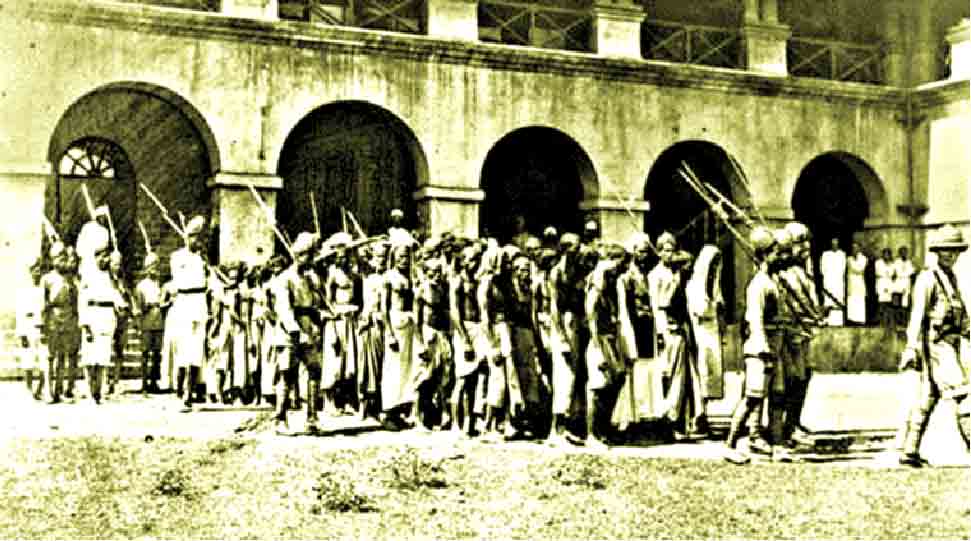
The Aligarh Muslim University recently organized a webinar on the controversial Khilafat Movement. Interestingly, one of the participants was a professor from Turkey. The move was widely criticized, as many viewed it as an effort to glorify and mainstream the notorious Khilafat Movement of 1921 that led to genocide of Hindus in Malabar, and a preparation for Khilafat 2.0. The Khilafat Movement continues to inspire Islamists and elaborate plans have been made by them to celebrate the genocide on Hindus, as it enters the centenary year in 2021. It must be mentioned here that even the anti-CAA campaign by Islamo-Leftists was described as a Khilafat 2.0 and the police interrogation of some of the key organizers of the campaign revealed that the purpose of the campaign was nothing but establishment of an Islamic State in India.
Ever since India became an independent democracy, there has been a concerted effort to whitewash the notorious Malabar riots of 1921 and project it as either a peasant uprising against exploitative landlords or link it with freedom struggle. Although all these discussions largely remained in the realms of academia so far, in the run up to the centenary year, there has been a renewed and motivated campaign to establish the distorted narrative through cinema and other mediums and graft it into the collective conscience of the people. It seeks not only to blur the facts that still remain afresh in the public memory and bury them further down so that ugly aspects of the riots never come up for historical scrutiny. Radical Islamist outfits such as Popular Front of India (PFI) and Socialist Democratic Party of India (SDPI), Jamat-e-Islami have elaborate plans to celebrate Khilafat centenary that led to establishment of a tiny Al-Daula (Holy Islamic State) for a brief period. These outfits have vowed to turn Kerala into an “Islamic State” in the next one decade.
One of such Islamic projects is a Malayalam film Variam Kunnan, a biopic on the mastermind of 1921 genocide, Variamkunnath Kunjahammed Haji. What annoyed many is the fact that barring a few notable exceptions –the title role is being played by Prithviraj Sukumaran – most of the key jobs in the film, right from production to execution, are handled by individuals who have sympathies with radical Islamist outfits, including PFI and Islamic State. One of the scriptwriters had posted a message on social media as to how cinema can be an effective tool for furthering the cause of Islamisation of Kerala. Another key person of the project reportedly made a failed attempt to join Islamic State in Syria to wage jihad against infidels. The Islamist-sponsored-and-scripted centenary blitzkrieg is being staged as an attempt to mount psychological terror on Hindus, who are on the verge of becoming a minority in Kerala, and thereby establish Quwwat ul Islam (the might of Islam).
It is interesting to note that the protagonist of the Islamist project, Kunjahammed Haji, belonged to a rabidly iconoclastic family who, along with his father, was earlier deported to Mecca for engineering a slew of communal riots. He spearheaded the Hindu genocide of 1921 which led to the massacre of thousands of Hindus, forcible conversions, rape of Hindu women and children and destruction of Hindu properties and places of worship.
Reportedly, in the biopic, Kunjahammed is projected as a paragon of communal harmony and Hindus as villains who sided with the British. His ‘valiant efforts’ led to the flight of the British from that part of the country and he established an independent Malayala Nadu (land of Malayalis) for a few months, though in reality what he established was Al-Daula (Islamic State) where he imposed jazia (religious tax) on Hindus of his territory.
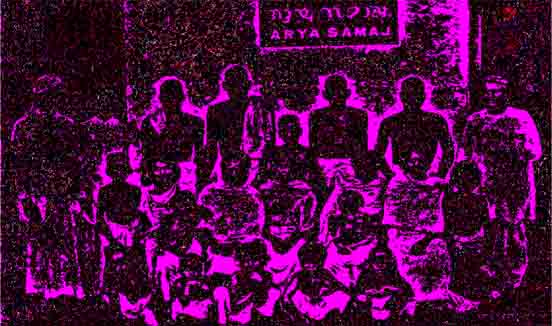
Arya Samaj played an important role in bringing back Hindus who were forcefully converted to Islam
It is important to understand the persona of Kunjahammad Haji who rose to notoriety at a young age as a constant cause of law and order problems in the area. The administration exiled him and his father to Mecca. His main vocation was extortion and supplying women for Arabs to be kept as their concubines. After his sojourn in Mecca, he was allowed to return to Kerala on the condition that he would not visit his native place.
In a bid to attract Muslims to the Khilafat Movement, Congress leaders approached him, though he was reluctant to join the movement initially. According to K Madhavan Nair, the freedom fighter, he was not keen to associate with Congress, which, Kunjahammad Haji believed, had ‘Hindu credentials’. But the Congress leaders managed to rope in him considering his sway among a section of Muslim youths. It is true that in the initial stages of the riots, he did not turn against the Hindus. However, as the Islamisation drive gained momentum, he showed his true communal colours and took recourse to killing or forcibly converting the Hindus into Islam. This irrefutable truth has been recounted and recorded by many victims and the witnesses of the riots.
A section of historians and Islamists allege that there isn’t any evidence to link Kunjahammad Haji with the anti-Hindu pogrom. This is far removed from reality. A report published by The Englishman on October 6, 1921 states: “Several recent reports show Variankunnath Kunhammad Haji and Chembakasseri Thangal have decided that all Hindus residing in villages at the mercy of rebel bands should be put to death unless they accept Islam. Instances are mentioned in which Hindus had actually have been forced to dig their own graves before being butchered.” His cruelty knew no bounds. C Gopalan Nair writes: “On the outbreak of the rebellion he became king, celebrated his accession by the murder of Khan Bahadur Chekkutti, a Moplah retired Police Inspector, who was decapitated while expiring in his wife’s arms.”
Moplahs led by Kunjahammad Haji committed unspeakable atrocities on innocent Hindus. The Special Judge hearing riot-related cases, in the judgement, notes: “The rebels seem to have meant to kill every male in the place whom they could catch hold of, and the only survivors were those who either got away or were left as dead. The abduction of a young girl and a boy shows deliberate ferocity of the attack.” The abducted girl was later rescued from the hands of the rebels “after a detention of six weeks and after suffering indescribable indignities”.
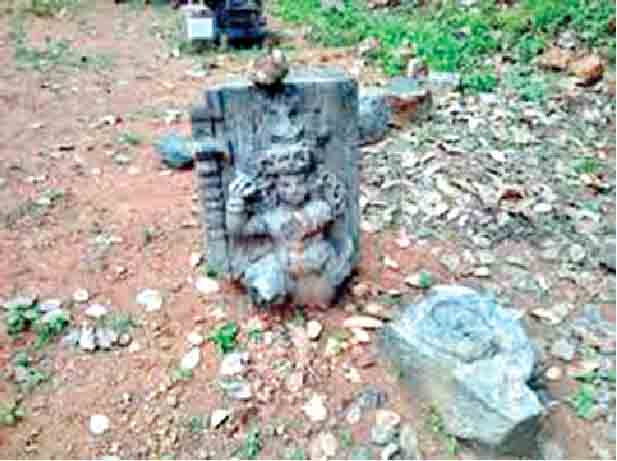
About 300 temples were destroyed by Mappila rioters in
Malabar. (Picture for representational purpose only)
Malabar. (Picture for representational purpose only)
It was the Marxist historians who first appropriated the communal pogrom as a peasant uprising to suit the ideological narratives and requirements and win over a large organised vote bank for the Left parties.
The Malabar holocaust doesn’t have many parallels in the history of India in terms of its magnitude and ferocity. It was, in fact, a culmination of a series of minor communal outbreaks by violent Mappilas against Hindus, which used to take place almost regularly ever since Tippu launched military raids to convert Kerala into an Islamic country in the 18th century. According to an estimate, 5,000 Hindus perished and over 30,000 people were forcefully converted during the six months of murder and mayhem. The official figures of forceful conversions are, as usual, much less. In her book, The Future Of Indian Politics: A Contribution To The Understanding Of Present-Day Problems, Annie Besant notes: “They murdered and plundered abundantly, and killed or drove away all Hindus who would not apostatize. Somewhere about a lakh of people were driven from their homes with nothing but the clothes they had on, stripped of everything.”
Gandhiji’s folly
Mahatma Gandhi took up the Khilafat cause in 1921 hoping that it would bring about a change in the mindset of Muslims towards cow. He states: “I yield to none in my regard for cow. I have made the Khilafat cause my own, because I see that through its preservation full protection can be secured for the cow.” Belying his sublime hopes, the bestial Mappilas stole cows from Hindu houses, slaughtered them and fed the meat to the forcefully converted Hindus.
A large section of the Congress, including Muhammad Ali Jinnah, staunchly opposed Gandhiji’s plan and warned against bringing “unwholesome” elements into politics. Yasser Latif Hamdani, Lahore-based author, in his book Mr Jinnah: Myth and Reality, writes, “In his passion to rouse masses, Gandhi lost all control and balance. Ultimately — as Jinnah had warned — the movement fell flat on its face and Gandhi — along with the Khilafists — was utterly humiliated but not releasing the genie of identity politics in South Asia.”
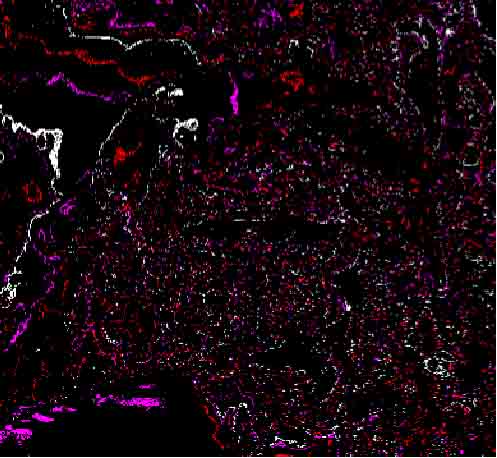
Ali Musaliar, chief of Mappila army
A large section of the Congress, including Muhammad Ali Jinnah, staunchly opposed Gandhiji’s Khilafat move and warned against bringing ‘unwholesome’ elements into politics
Another prominent leader who opposed Gandhiji’s tie-up with Islamist forces was Dr. BR Ambedkar. He says: “The (Khilafat) movement was started by the Mohammedans. It was taken up by Mr. Gandhi with a tenacity and faith which might have surprised many Mohammedans themselves. There were many people who doubted the ethical basis of the Khilafat movement and tried to dissuade Mr. Gandhi taking any part in the movement the ethical basis of which was so questionable.” (Pakistan or Partition of India: pages- 146,147)
Dr Ambedkar further writes: “There occurred in that year in Malabar what is known as the Moplah Rebellion. It was the result of the agitation carried out by two Muslim organizations, the Khuddam-i-Kaba (servants of the Mecca Shrine) and the Central Khilafat Committee. Agitators actually preached the doctrine that India under the British Government was Dar-ul-Harab and that the Muslims must fight against it and if they could not, they must carry out the alternative principle of Hijrat. The Moplahs were suddenly carried off their feet by this agitation. The outbreak was essentially a rebellion against the British Government. The aim was to establish the kingdom of Islam by overthrowing the British Government. Knives, swords and spears were secretly manufactured, bands of desperados collected for an attack on British authority. On 20th August, a severe encounter took place between the Moplahs and the British forces at Thirurangadi. Roads were blocked, telegraph lines cut, and the runway destroyed in a number of places. As soon as the administration had been paralysed, the Moplahs declared that Swaraj had been established. A certain Ali Musaliyar was proclaimed Raja, Khilafat flags were flown, and Ernad and Walluvanad were declared Khilafat Kingdoms. As a rebellion against British Government, it was quite understandable. But what baffled most was the treatment accorded by the Moplahs to the Hindus of Malabar. The Hindus were visited by a dire fate at the hands of the Moplahs. Massacres, forcible conversions, desecration of temples, foul outrages upon women such as ripping open pregnant women, pillage, arson and destruction – in short, all the accompaniments of brutal and unrestrained barbarism, were perpetrated freely by the Moplahs upon the Hindus until such time as troops could be hurried to the task of restoring order through a difficult and extensive tract of the country. This was not a Hindu-Muslim riot. This was just a Bartholomew. The number of Hindus, who were killed, wounded or converted, is not known. But the number must have been enormous.
One among those who doubted the logic of Gandhiji’s experiment was Dr Keshav Keshav Baliram Hedgewar, the founder of the Rashtriya Swayamsevak Sangh (RSS). Once he even met Gandhiji and asked him: “As a matter of fact, we have in Bharat people belonging to different faiths like Hinduism, Islam, Christianity, Zoroastrianism and Judaism. So, instead of talking about the unity of all these people what is the rationale behind talking only about Hindu-Muslim unity?” Gandhiji retorted: “Through this, my idea is to create love for this nation in the minds of Muslims here, and don’t you see the spectacle of their fighting shoulder to shoulder with others for India’s freedom?” Doctorji, who was not satisfied with this answer, again said: “Even before this slogan was coined, many Muslims like Barrister Jinnah, Ansari, Hakim Ajmal Khan, etc. were active under the leadership of Lokmanya Tilak in the freedom movement. And I fear this slogan will create divisive tendencies in the Minds of Muslims.” Gandhi ji abruptly wound up the meeting saying “I don’t have such fear.” (Dr. Hedgewar by Nana Palkar: page 99).
Dr. MGS Narayanan, former Chairman, ICHR, New Delhi, shedding light on why and how the calculations of Gandhiji went wrong and what disastrous turn the movement took, states: “Gandhiji was politically innocent at that time to assume in the context of British India that the poor and illiterate Muslim community in India could be drawn into active political struggle against the British power easily. To please the Muslims he supported the case of the moribund Khilafat that the British had done away with in Turkey at the close of the First World War. Later Mahatma Gandhi regretted this folly in sponsoring the Khilafat, but it was too late by that time–the damage was already done. Instead of coaxing Muslims into social reform and modern education, the Khilafat had legitimised their conservative religious instincts and roused their fears and suspicions about the outside world. It strengthened their communalism, which thrived on hatred against the Hindu Kafirs, lying dormant from the days of Alauddin Khilji and Aurangazeb.” (In his Foreword to the book, Gandhi and Anarchy by Chettur Sankaran Nair- page II).
All this lead us to one conclusion: Gandhiji, who sought to club the Khilafat Movement with India’s freedom struggle, was never under the illusion that the Movement had nothing to do with our freedom movement, and for the Indian Muslims it was a religious war or jihad (the utmost effort, a war in the cause of Islam). And what he said about the movement bear ample testimony to this fact. He said: “The brave and god-fearing Moplas were fighting for their religion in according with their religious tenets as they understood them.” (Dr. Ambedkar, Pakistan or Partition of India, page 148).
Gandhiji, in his over-enthusiasm to somehow bring the Muslims to the mainstream of the freedom struggle, had miserably failed to properly assess or evaluate the Muslim psyche and the disastrous turn the Khilafat movement was to take, as also the Congress leaders of Malabar who had made highly emotional speeches to arouse the Muslim passions in the name of Khilafat.
Khilafat in Malabar: Hindu genocide
With the Congress taking up the Khilafat cause, Muslims in large numbers joined the organisation. Initially there was bonhomie between Hindus and Muslims. But slowly the things started taking a communal turn. The Congress’ call for non-violent means of protest had no effect on Muslims, who started amassing weapons and targeting Hindus. In The Moplah Rebellion, C Gopalan Nair writes: “The Hindu believed in Hindu-Muslim unity and never dreamed of a day when the Muslim would turn against him; the Moplah had no such delusion; he wanted Muslim swaraj; he worked for it; he was ready for a general rising and bided him time.” Incensed by the alleged arrest of the Khilafat leader Ali Musaliar and the rumour that the Mambaram mosque was razed to the ground by the British, the Mappilas went on a rampage and killed Hindu men, women and children. Violence erupted in areas where Muslims had considerable presence.
Avokker Musaliar, a Khilafat chieftain, led a huge contingent of rebels who indulged in manslaughter and forceful conversion of hundreds of Hindus. He usurped a Nambuthiri illom and conducted a sharia court. Scores of Hindus were brought before him from villages, some with their families. Invariably they were given two options: convert or face the music. Circumcision was performed promptly on men who accepted Islam while others were taken to a shrine attached to the illom and beheaded and their bodies were thrown into a well. About 60 bodies were recovered from the well later.
‘Malabar has taught us what Islamic rule still means, and we do not want to see another specimen of the Khilafat Raj in India’ – Annie Besant
Chembrassery Imbichi Koya Tangal was another beast in human form who spearheaded mass murders and forceful conversion. “More than 40 Hindus were taken to the Tangal with their hands tied behind their back, charged with the crime of helping military by supplying them with milk, tender coconuts, etc., and 38 of these Hindus were condemned to death. …Thirty eight men were murdered, one of whom a pensioned Head Constable to whom he owned a grudge had his head neatly divided into two halves.” (The Moplah Rebellion)
A report prepared on the atrocities committed on Hindus mentions about an incident where ‘a pregnant woman carrying 7 months was cut through the abdomen by a rebel and she was lying dead on the way with the dead child projecting out of the womb’. “Another, a baby of six months was snatched away from the breast of its own mother and cut into pieces.”
Annie Besant was a staunch critic of Khilafat. She writes, “Malabar has taught us what Islamic rule still means, and we do not want to see another specimen of the Khilafat Raj in India.”


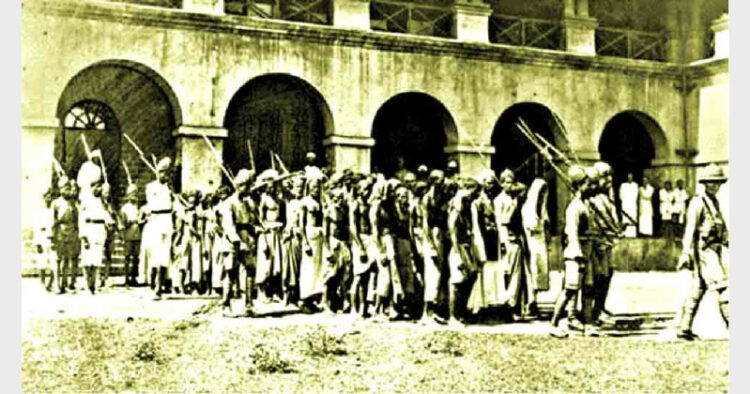










Comments